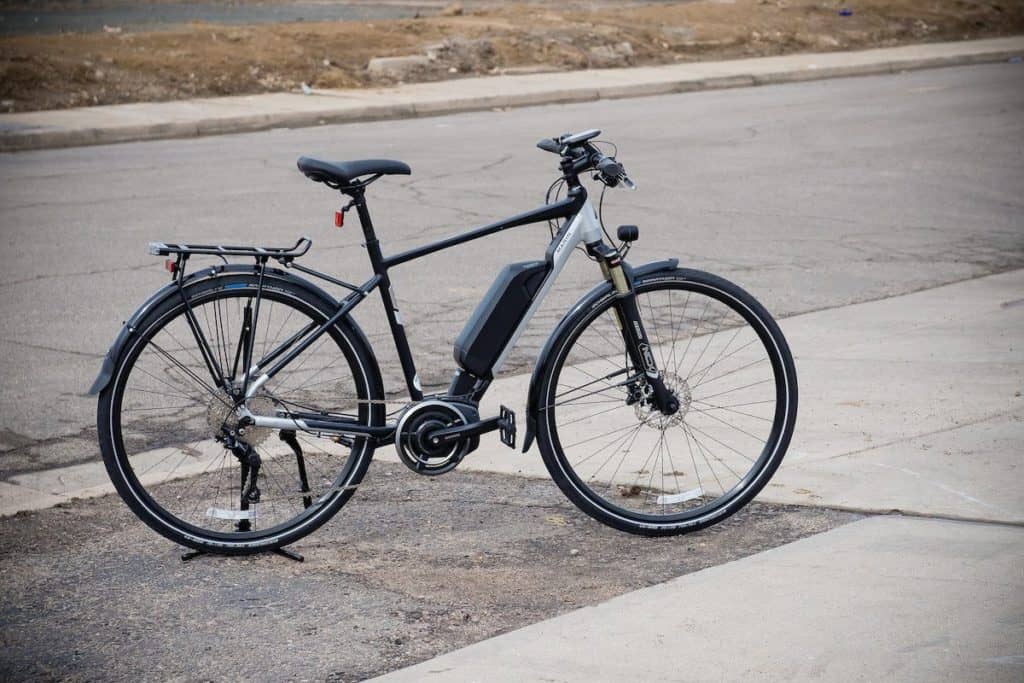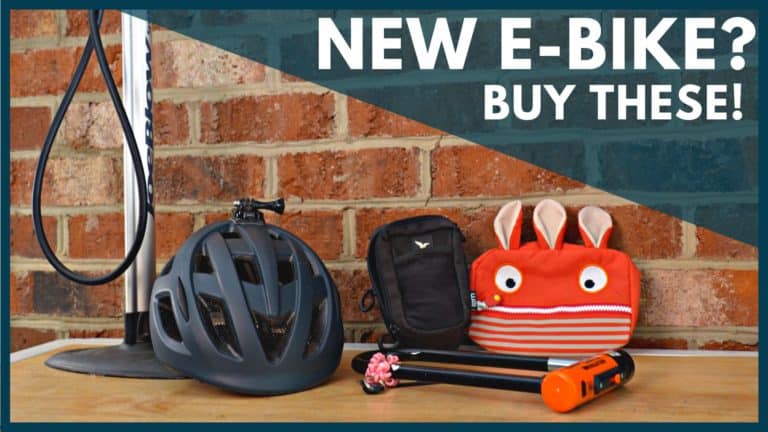
This is one of the most common questions that come up with customers contacting me about electric bikes or coming to test ride bikes. I completely get it, electric bikes are not cheap and it would make sense to add something to your own bike or say buy a non-electric cargo bike and adding an electric bike kit to it in the future. This is a bit of a long-winded answer so grab yourself a seat and let’s get started.
What Type of Bike Do You Have Now?
This is the very first question I ask because more times than not, the “starter” bike isn’t up to quality or standards of what I would recommend adding a 250W+ motor to assist you up to 20mph. You need good parts, a strong frame, and wheels, and it needs to be in good condition. If you need a $250 or more for a tune-up to replace worn parts and get the bike ready then it probably isn’t worth it.
What Makes Prebuilt Electric Bikes So Good
The large majority of the electric bikes that I sell use a Bosch or Shimano mid-drive motor which is a motor that your bike frame is designed around and your cranks attach directly to, which then drives your chain. This is the most efficient setup as your cranks directly send torque to the motor and then the motor takes your torque and the speed of the bike to send more energy into your chain and drivetrain. That’s the basics and we will do another article/video with Bosch techs to go into detail. Most aftermarket kits are built around a wheel that “pushes” or “pulls” you depending on if it is the front or rear. They rely on sensors to know what your torque is doing either at the crank or the wheel. There is always a lag and these systems can sometimes feel very jerky compared to the mid-drive (especially Bosch) which feels like your legs just have extra power today. Taking this a step further, the bike was designed around the motor and battery that the bike brand picked. The bike parts are designed to handle the torque and speed the motor puts out. Higher torque motors like what you find on a cargo bike or mountain bike typically have better brakes for example. Additionally, it is a SYSTEM instead of a battery from one randomly sourced factory, wiring from another, etc. All of these parts hold a warranty and are designed to work together. One last step, some of the biggest advantages besides the feel of a mid-drive bike from Shimano or Bosch are the added accessories that work with the battery and motor. Most of our “everyday” bikes come with lights integrated into the motor and battery, you turn on the bike and your lights turn on and run off the massive battery. Bosch has an option on their new Performance and Cargo line system to run a 2nd battery. Most of our cargo bikes from Xtracycle, Tern, Urban Arrow, and Riese & Muller has an option for a 2nd battery built into the frame. Tern specifically sends their Tern GSD out with a 2nd battery harness already preinstalled (super nice!)
Classes of E-Bike Motors
I sell primarily Class 1 electric-assist bikes. These only ASSIST your pedaling up to 20 mph. The other I sometimes sell are Class 3, these ASSIST your pedaling up to 28mph and are not allowed on most bike paths and you have to be over 16 to use them. Aftermarket kits often are Class 2, which means they have a throttle and also can often be calibrated to throttle you to whatever speed the motor can handle. I do not sell Class 2 bikes and this throttle is often where these bikes break down where the throttle gets stuck “on” and is slightly terrifying for the customer. Please reference E-Bike FAQ for more details.
Talking About Price
My goto aftermarket kit is something from Electric Bike Outfitters. They are local to Denver and very knowledgeable. I’m not talking to someone overseas to troubleshoot or deal with warranties. The most common kit I deal with them is $1200 for the kit, and this doesn’t include any potential replacement parts for rotors, derailleurs, shifters, etc. Add in $200 or so for labor, $1400 and we don’t even have the bike. Many of their rear hub kits (which I prefer) don’t work on my most common cargo bikes. Their front hub system does, but I really dislike front hub drives in rain or snow which we get a lot of in Denver, Colorado. I’ve had a few become really sketchy in rain and snow where the front hub motor is pulling the bike and the rear wheel that normally propels the bike is fighting with it. Remember my first point about the bike you are turning into the electric bike? Did it need that additional service? You are already in for $1400 before that potential additional service and parts. I can get you a solid Bosch-powered electric bike for $2000.
Other Advantages of a Purpose-Built Electric Bike
The durability of e-bike systems – I have a few Bosch e-bike customers with 15-25k miles on their bikes. We have swapped out cogs on their cranks, and replaced normal bike parts. The battery doesn’t fully hold a charge but the motor system itself is working just fine. Aftermarket kits have a couple of different styles, 1. direct drive (longer-lasting but heavy and I hate the pulsing feel) can last 10k miles but in Denver, we see a bit less due to winter riding. 2. Geared hubs are smaller and lighter but I have seen gears need to be replaced after 2k miles.
The durability of parts – The parts that come on a purpose-built electric bike are typically electric bike-rated parts, like chains, tires, and higher-end brakes that will handle the abuse and torque of the motor better.
Front and Rear Lights Off Bike Battery – Lights plugged right into your motor that can turn on when your bike turns on making the bikes even more
Dual Batteries – Bosch can run dual batteries on specifically designed bikes that work together and can even charge together.
Weight – I’m working on weighing a lot of bikes currently but the hub system seems to add 5-15 pounds depending on the battery
Safety – Bosch’s UL-rated system with a built-in battery management system is one of the only electric bikes I would personally charge in my house. There have been some super sketchy battery and charging units that have come into the shop. I’ll work on the bike mechanics side of it but never electric, and always require the customer to wait so I don’t have to store their bike.
Bike Maintenance – Changing a flat and doing standard bike repairs on a mid-drive bike is like working on a normal bike. Working on a bike with a rear hub motor can be a PITA due to the weight and cables attached that are sometimes difficult to get to. I wouldn’t want to change a flat on one of these outside of the bike shop.
Customer Support – It can be a huge hassle to deal with 3rd party warranty, part replacements, and finding suitable parts for when they discontinue it. Bosch, Shimano, and Yamaha all have dedicated customer service help for their bikes and I know I can help you with that bike in 2-3+ years.
Unique Bikes are a Great Exception
Here’s the deal, some bikes are so unique that you can only do an aftermarket to get electric on that style of bike. Tandems and trikes are the most common that I see this with.
Conclusion
In very unique situations I do think an aftermarket electric bike kit is the only option, but other than those situations I highly recommend a dedicated system that your bike and the parts are designed for.



